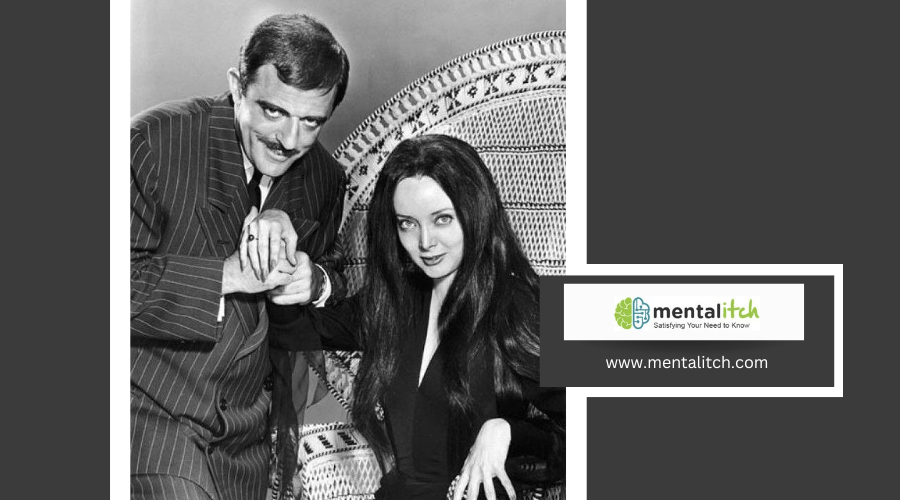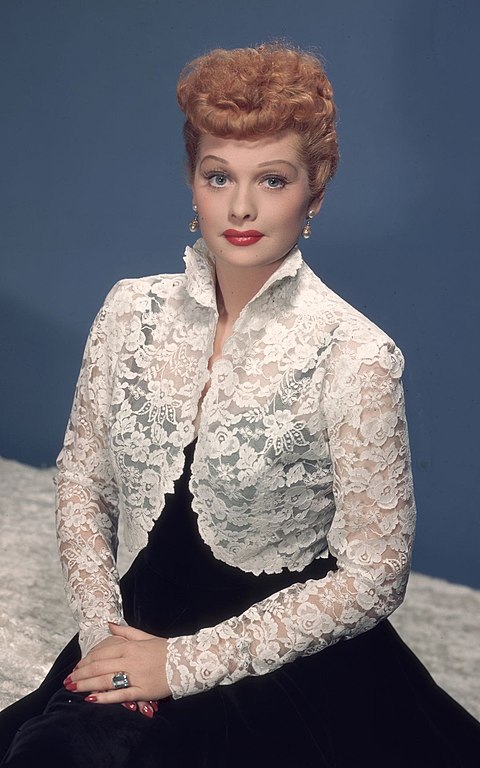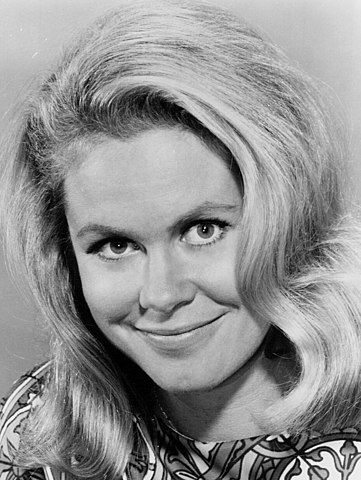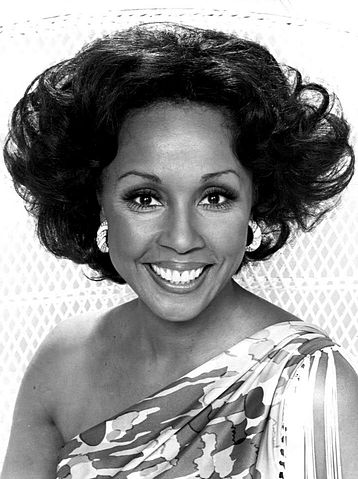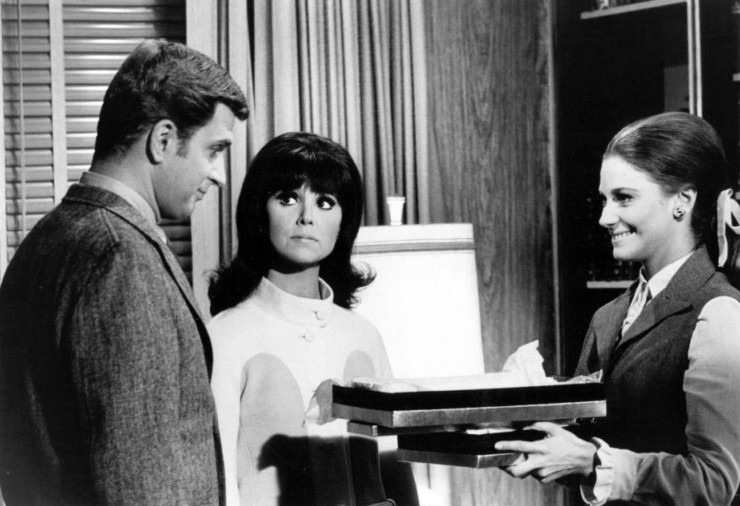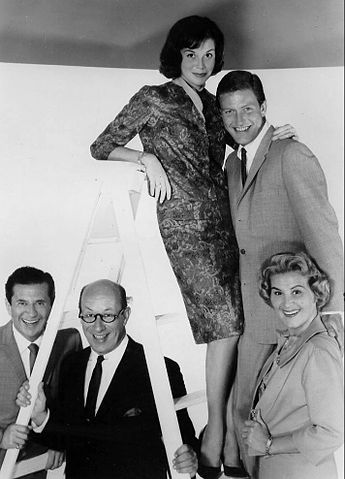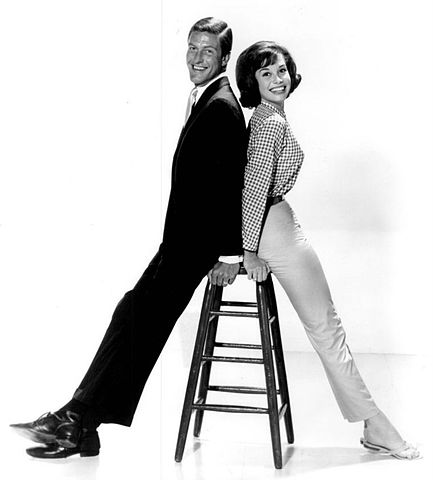The 1960s was a pivotal decade for television, and women played crucial roles in reshaping the medium. It was an era when strong female leads began to emerge, reflecting and influencing the cultural shifts in society. From career-driven women to unique matriarchs, these characters brought fresh perspectives to the TV screen.
In shows like “Cagney & Lacey,” viewers met women who were both career-focused and family-oriented, challenging traditional gender roles. Meanwhile, “The Addams Family” introduced audiences to the strong, quirky matriarch Morticia Addams, a character who stood out for her individuality and strength.
Agent 99 from “Get Smart” became a beloved figure, showing women that they could be both tough and smart. As one half of a spy duo, she balanced humor with a strong sense of independence, making her a memorable and influential character of the 1960s. These groundbreaking women not only entertained but also inspired, paving the way for future generations of female TV leads.
Pioneers of the Small Screen
The 1960s were a transformative time for television, especially with shows led by remarkable women who broke various barriers in Hollywood. These pioneers brought unique talent and diverse perspectives to TV screens, shaping the entertainment industry in lasting ways.
Lucille Ball and ‘I Love Lucy’
Lucille Ball was an unparalleled talent in comedy. In “I Love Lucy,” she portrayed Lucy Ricardo, a housewife with big dreams of stardom. The show also starred her real-life husband, Desi Arnaz, and became a cultural phenomenon. Airing from 1951 to 1957, “I Love Lucy” was known for its innovative humor and physical comedy. Lucille Ball’s influence extended beyond acting; she was also a trailblazing producer. Desilu Productions, co-founded by Ball, produced groundbreaking series like “Star Trek” and “The Untouchables.” Her work set the stage for women in both acting and production roles in Hollywood.
The Unforgettable Mary Tyler Moore
Mary Tyler Moore first captured audiences’ hearts as Laura Petrie on “The Dick Van Dyke Show,” which aired from 1961 to 1966. Her portrayal of a modern housewife was both charming and independent, showing women in a fresh and realistic light. Moore’s real breakthrough came with “The Mary Tyler Moore Show” in the 1970s, but her early work in the 1960s laid the groundwork for portraying strong, complex female characters on television. Her influence is seen not just in later sitcoms but in how women are represented in media.
Elizabeth Montgomery’s Magical Presence in ‘Bewitched’
Elizabeth Montgomery became a TV icon through her role as Samantha Stephens in “Bewitched,” a show about a witch married to a mortal. Airing from 1964 to 1972, “Bewitched” was among the first series to blend fantasy and domestic life, offering a mix of comedy and social commentary. Montgomery’s performance was enchanting, bringing a magical dimension to the role of a typical American housewife. Her character’s struggles with her magical identity and her efforts to fit into a mundane world mirrored societal themes of conformity and self-acceptance.
Diahann Carroll’s Groundbreaking Role in ‘Julia’
Diahann Carroll made history as the first African American woman to star in a non-servant role in her own TV series with “Julia,” which aired from 1968 to 1971. She played Julia Baker, a widowed nurse raising her young son. This show broke significant racial barriers by portraying a professional African American woman in a dignified and relatable manner. Carroll’s performance was both powerful and nuanced, showing that diversity on television could resonate with a wide audience. “Julia” paved the way for future shows with diverse casts and minority leads.
Marlo Thomas as ‘That Girl’
Marlo Thomas starred in “That Girl,” which aired from 1966 to 1971. She played Ann Marie, an aspiring actress living independently in New York City. The show was one of the first to focus on a single woman pursuing her career, breaking away from the traditional housewife roles typically shown on TV. Thomas’s portrayal was relatable and inspirational for many young women striving for independence and success. “That Girl” highlighted the changing social norms of the 1960s and contributed to the evolving narrative around women’s roles both at home and in the workplace.
Breaking Barriers in Social Norms
In the 1960s, certain TV shows led by women began to challenge societal expectations. These shows addressed key issues like the evolving role of women, racial integration, and fashion as a form of independence.
Redefining the Role of Women in Society
Television in the 1960s showcased women venturing beyond traditional housewife roles. Shows like “The Dick Van Dyke Show” featured Mary Tyler Moore as Laura Petrie, who embodied a modern woman with both home responsibilities and personal agency. Laura was not just a housewife; she had opinions, ambitions, and often wore pants, a bold move symbolizing women’s growing independence.
Another example is “Bewitched,” where Elizabeth Montgomery played Samantha, a witch who chose to live as a suburban housewife. Samantha often used her powers to solve problems, subtly questioning why women needed to conform to societal norms when they had so much more to offer.
Addressing Taboos: Race and Single Parenthood
In this era, TV also began to touch on delicate issues like race and single parenthood. Shows like “Julia” starring Diahann Carroll was groundbreaking as it featured a Black single mother as the main character. Julia Baker, a nurse raising her young son, broke racial barriers and presented a positive, relatable image of Black family life on prime-time television, challenging the predominantly white representation in media.
Addressing single parenthood, these shows highlighted women’s resilience and strength in raising families alone. This portrayal was a step forward in acknowledging the diverse experiences of women, beyond the conventional nuclear family structure.
Fashion and Independence: Reflections through TV
Fashion in the 1960s TV shows was more than just style; it was a statement of independence and change. Female characters began to appear in clothes that reflected their independence. Laura Petrie’s choice to wear pants in “The Dick Van Dyke Show” was symbolic of the shifting gender norms, representing newfound freedom for women to choose how they wanted to present themselves.
In “That Girl,” Marlo Thomas played Ann Marie, a single, young woman chasing her acting dreams in New York City. Her stylish, modern outfits signified her independence and ambition. Ann’s character was a departure from traditional depictions, embracing agency and career aspirations, and inspiring viewers to reconsider the role of fashion as part of women’s liberation.
These TV shows were instrumental in breaking barriers and changing perceptions, reflecting the evolving social landscape of the 1960s.
Cultural Impact and Legacy
These TV shows led by women in the 1960s significantly influenced future television series and played a role in advancing women’s representation in media during a time when the women’s movement was gaining momentum.
Influence on Future Generations of TV Shows
The 1960s’ female-led TV shows broke new ground by portraying strong, independent women in lead roles. Lucille Ball of “I Love Lucy” showcased the power of comedy through her character, inspiring future generations of female comedians and actresses.
These shows provided blueprints for depicting complex female characters with depth and relatability. Shows like “The Mary Tyler Moore Show” (which emerged in the 1970s but was influenced by earlier trends) carried this torch, highlighting women as empowered and professional figures within society.
The friendships and partnerships depicted in these shows often contrasted with traditional family dynamics, paving the way for series like “Friends” and “Sex and the City,” which emphasized companionship among women.
Women’s Movement and Media Representation
Female-driven TV shows in the 1960s mirrored the evolving societal attitudes towards gender equality. These programs ran parallel to the wider civil rights movement, reflecting and sometimes driving conversations about feminism and women’s rights.
The characters often challenged stereotypical roles, reflecting the aspirations of many women seeking greater autonomy and recognition in various fields. Shows like “Bewitched” featured Samantha Stephens, a witch who balanced her supernatural powers with domestic life, subtly critiquing and reimagining traditional gender roles.
These shows gave visibility to empowered matriarchs and independent women, contributing to the broader feminist discourse. They also highlighted the importance of equality and the shifting dynamics in the media’s portrayal of women, influencing both viewers’ perceptions and future media content.
Behind the Scenes: Creation and Production
In the 1960s, women faced significant hurdles in TV production. Network support and sponsorships played crucial roles in pushing these projects forward.
Challenges in the Male-Dominated Industry
Women had to work extra hard to prove themselves in a male-dominated industry. Lucille Ball was one such trailblazer. After her success with “I Love Lucy,” she continued to break barriers with The Lucy Show.
Hollywood was not very welcoming to female producers and directors. Gender biases often meant fewer opportunities and more scrutiny.
Women often had to take control to make their mark. For instance, Ball bought out her ex-husband’s shares to run Desilu Productions, paving the way for more female-driven content.
The Role of Networks and Sponsorships
Networks like CBS and NBC played essential roles in airing female-led shows. However, securing time slots was often challenging.
Sponsorships were equally crucial for funding. Advertising agencies in New York controlled much of the sponsorship money. Successful partnerships with sponsors ensured that shows like “The Mary Tyler Moore Show” received the backing they needed.
Support from sponsors and networks enabled women to gain creative control. This led to the success of several groundbreaking sitcoms, changing the landscape of TV forever.
The Evolution of the Female Lead
Television in the 1960s saw a notable shift from female characters being depicted as housewives to more diverse roles, including those with careers in various professional fields.
From Housewives to Career Women and Beyond
In the early 1960s, female leads were often portrayed as housewives. Shows like “The Donna Reed Show” and “Leave It to Beaver” featured women dedicated to their families and homes.
As the decade progressed, societal changes such as the feminist movement began influencing television. Characters started stepping out of traditional roles, taking on careers like nurses, teachers, and secretaries.
By the late 1960s, there were more diverse roles for women on TV. Shows like “Julia” featured Diahann Carroll as a nurse, breaking racial and professional barriers. Additionally, “The Mary Tyler Moore Show”, though not premiered in the ’60s, reflected this shift by featuring a career-oriented woman in journalism.
This evolution highlighted a broader representation of women’s roles in society, mirroring real-world changes in the workforce during the 1960s. It showed women not just in domestic settings but as powerful individuals pursuing careers and making significant societal contributions.
The Crossover to Modern Television
Shows led by women in the 1960s set the stage for today’s television landscape. They brought new perspectives and characters that are still seen today, influencing both content and culture.
References in Contemporary TV Series
Many modern series draw clear inspiration from these pioneering 1960s shows. “Sex and the City” is an example that echoes themes from earlier series like “The Mary Tyler Moore Show” and “The Donna Reed Show”. Both explored women’s independence and careers.
Amy Poehler and Tina Fey have also cited classic women-led shows as influences for their hit series like “Parks and Recreation” and “30 Rock”. These modern shows continue the tradition of smart, independent female leads.
Additionally, “The Carol Burnett Show” paved the way for women in comedic roles, leading to contemporary successes like Ellen DeGeneres, whose own variety show blends comedy and talk, showing Carol Burnett’s lasting impact.
The Lasting Influence on Popular Culture
The influence of 1960s TV shows led by women stretches beyond television itself. They contributed to broader shifts in popular culture, encouraging a more inclusive representation of women.
“Wonder Woman” provided an early example of a strong female superhero, influencing later characters in pop culture and media. Shows like “Laverne and Shirley” showcased female friendships, a theme that continues in many modern series.
Classic women-led sitcoms changed public perceptions, challenging traditional gender roles and celebrating women’s experiences. These early series provided a foundation, allowing contemporary shows to build further, influencing both the industry and audience expectations.
